Top 10 Ecommerce Trends You Should Know in 2025
“In the modern world of business, it is useless to be a creative, original thinker unless you can also sell what you create.” – David Ogilvy, Co-founder of Ogilvy
E-commerce is more dynamic than ever, where brands are constantly innovating to stand out in a crowded marketplace. However, as Ogilvy’s quote suggests, creativity alone isn’t enough. Success in 2025 will depend on how well businesses can market, personalize, and sell their products effectively.
Furthermore, with changing consumer behavior, advancements in AI, and a growing emphasis on sustainability, the e-commerce landscape is evolving rapidly. To stay ahead, businesses must embrace key ecommerce trends that enhance customer experience, drive conversions, and build brand loyalty.
In this blog, we’ll explore the top 10 trends in ecommerce that will shape the industry in 2025 and how you can leverage them for success.
- Augmented Reality: Bringing the Shop to Your Screen
- AI to the Rescue: Addressing Customer Needs Efficiently
- Chatbot Marketing: Bringing a Human Touch to the Digital World
- UGC Revolution: Giving Power to the People
- E-Commerce CRO: Boosting Sales with Visits
- Voice Assistants: Growing Power of Voice Search
- Omnichannel Strategy: Seamless Experiences Across Channels
- Social Shopping: Turning Social Media Posts into Sales
- Subscription Model: Path to Steady Growth
- Future of Delivery: Fast and Flexible
Game-Changing Ecommerce Trends 2025 Every Business Must Know
The trends in eCommerce market are always evolving. Businesses need to be on their toes when it comes to knowing and learning the trends that are working best in their niche.
Let’s explore some of the common and top ecommerce trends you should know to stay ahead of your competitors.
1. AR: Bringing the Shop to Your Screen
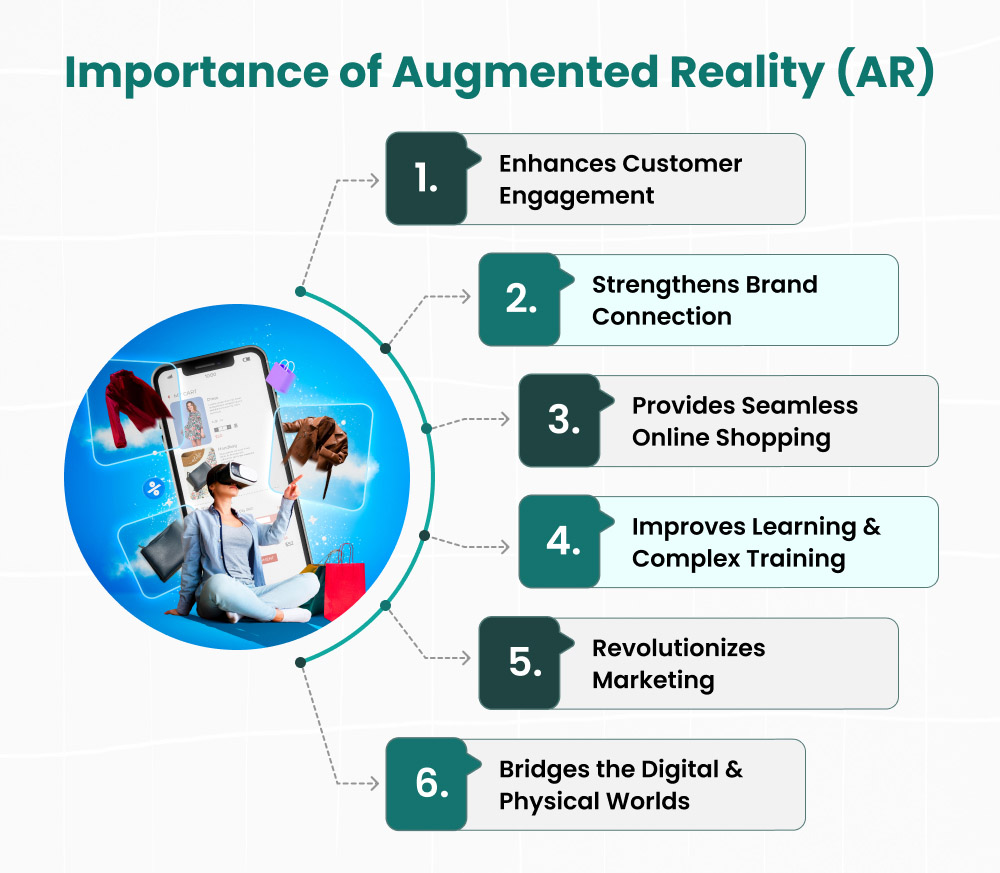
Augmented reality is an advancing technology that transforms a volume of data and analytics into animations or images. These are embedded in the real world. On the positive side, brands have identified the potential of the hyper-personalized experiences it provides.
According to The Business Research Company, the augmented reality market is expected to increase as high as $274.54 billion in 2025 at a CAGR of 43.6%.
It’s essential to understand how ecommerce trends such as this one are going to influence marketing as a whole. Let’s find out:
-
Allows You to Experience a Product
Say you want to buy a pair of sneakers online. But before making a purchase, you want to try them on. Since it is all virtual, there is no concept of tangibility or trial. The feature of overlaying 3D product images on the body lets consumers have an idea about how it will fit and can be styled.
-
Provides Options to Choose From
Gone are the days when you had to stick to a set collection of products. With AR, you can get a preview of a set color, shape, or size of a particular product. This ecommerce trend helps you decide what suits your wants or needs the best.
-
Helps Visualize a Product in a Particular Setting
Many brands have successfully implemented AR (Augmented Reality) technology to help customers visualize products in their homes before purchasing.
Here are some notable examples of this current ecommerce trend:
- IKEA Place

IKEA’s AR app, IKEA Place, allows customers to place true-to-scale 3D models of IKEA furniture in their homes, helping them see how items will fit in their space.
- Nike Fit
Nike’s Nike Fit uses AR technology to help customers find their perfect shoe size. By scanning their feet with a smartphone camera, the app provides a precise size recommendation.
- Philips Hue
Philips Hue’s AR integration allows customers to visualize how smart lighting will look and feel in their space.
2. AI to the Rescue: Addressing Customer Needs Efficiently
“AI will be taking over jobs.”
This is a common notion people have about AI. However, in the past few years, it has completely changed 2025 ecommerce trends for the better.
Incorporating AI-powered models to provide a personalized experience is a great tool for sustainable ecommerce industry trends. It all starts with an online store analyzing a person’s browsing history and purchase data. This way, it suggests items depending on past purchases.
Benefits of AI in ecommerce:
- Ecommerce Virtual Assistants
AI enhances the customer experience by providing real-time assistance, streamlining product searches, and handling inquiries efficiently.
- Smart Search like Image Annotations
Ecommerce trends focus on improving the user experience, with one key advancement being the ability for customers to search for products using images. For this reason, product discovery is more seamless and efficient.
- Automating Customer Support
You can reduce response time and improve efficiency by using AI-driven tools to handle routine customer queries, allowing human agents to focus on complex issues.
- Remarketing to Potential Customers
AI helps in re-engaging visitors who haven’t converted yet by showing tailored ads increasing the likelihood of conversions and boosting sales.
In short, AI is truly revolutionizing the ecommerce industry trends by influencing store features and how the products or services are sold. A study showed that AI holds the power to reduce logistics costs by 15%, inventory levels by 35%, and service levels by 65%.
Also Read: AI-Driven Video Content Tools to Transform Your Ecommerce Business
3. Chatbot Marketing: Bringing a Human Touch to the Digital World
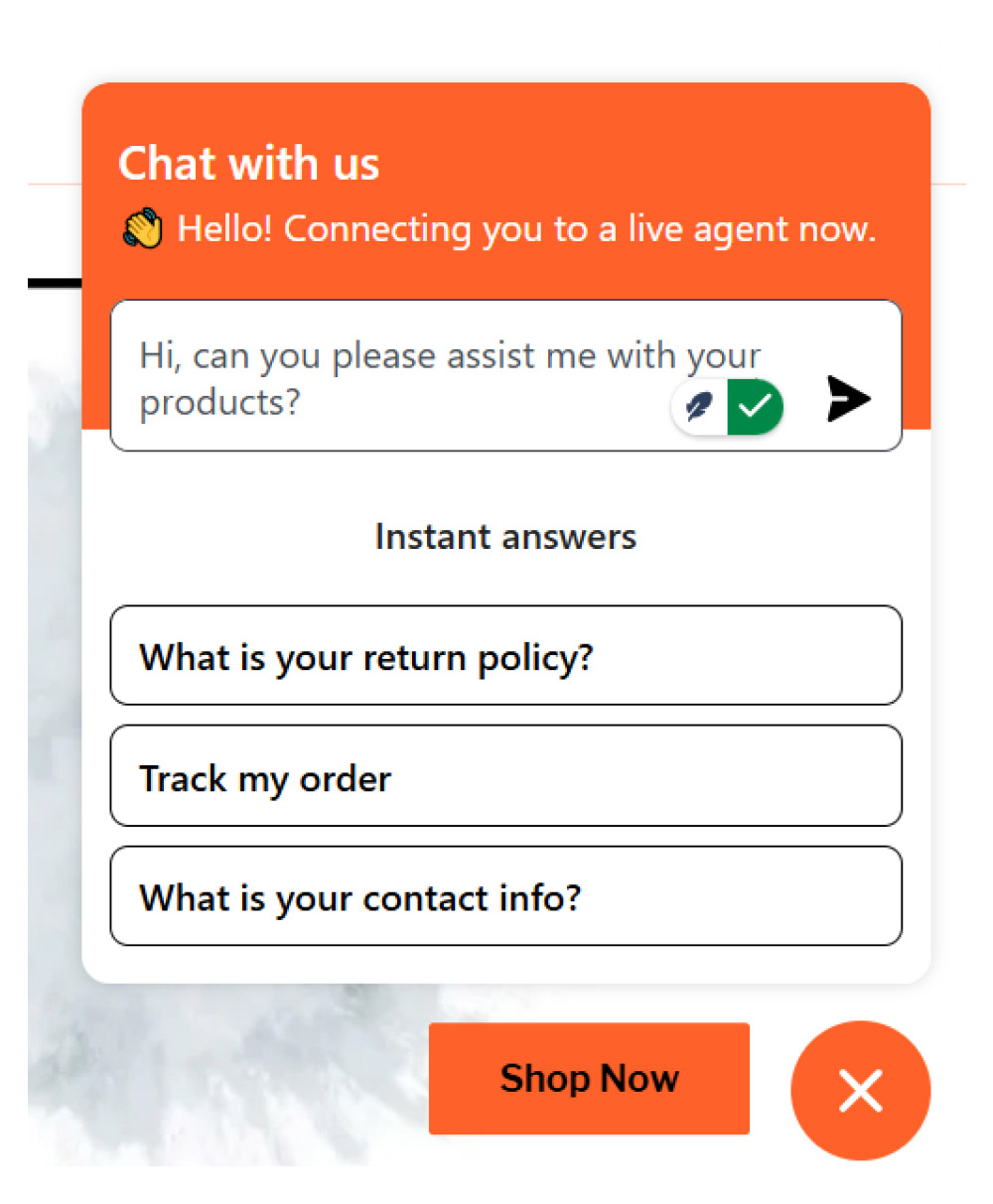
Where every sphere of ecommerce is being affected by AI, customer support is no exception. A positive and quality customer support experience is essential for both existing customers and potential buyers.
Measuring whether or not the customer support assistance is good depends on the minimum time in which the customer receives their answer. According to a study, 60% of customers agree that one of the key ecommerce trends is immediate response time, with a benchmark of 10 minutes or less.
Gone are the days when chatbot conversations used to feel robotic and stiff. The latest development in generative AI has made them interactive. Let’s understand this chatbot marketing with an example of a brand named Sephora. They have Sephora Virtual Assistant for Facebook Messenger and Website Chat.
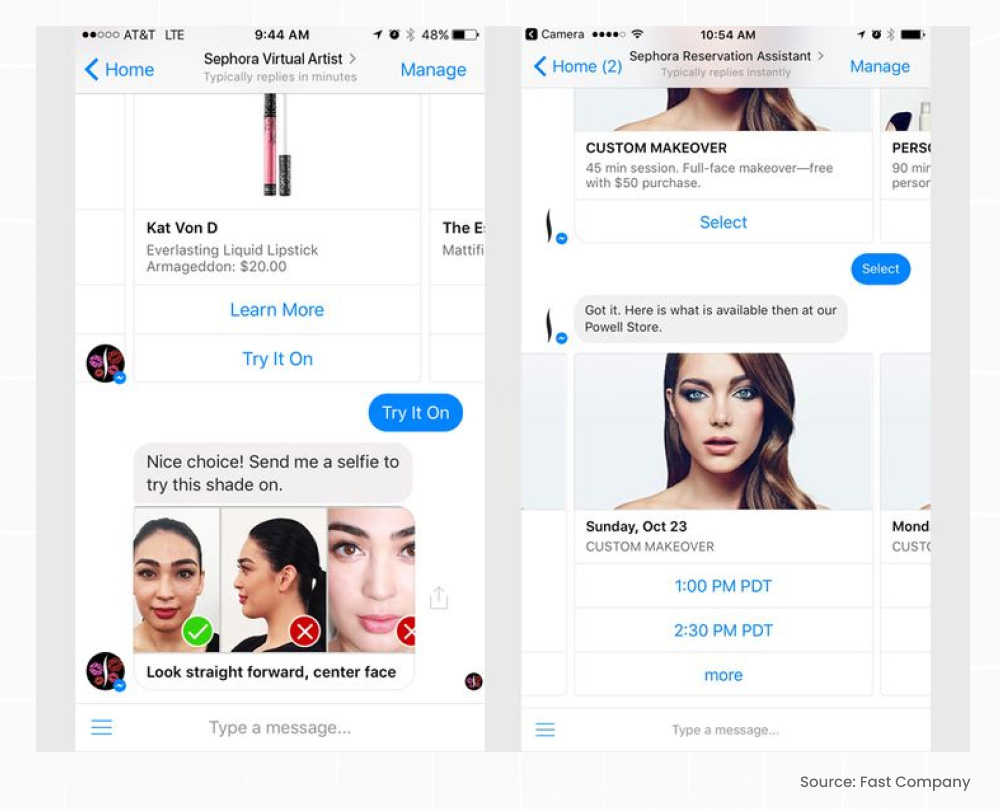
How Does Sephora Use Chatbot Marketing?
- Personalized Product Recommendations – Customers interact with the chatbot to receive tailored beauty product suggestions.
- Virtual Try-On Feature – Customers can try different makeup products virtually and see how they look on them.
- Booking In-Store Appointments – Users can schedule beauty consultations and makeover appointments at nearby Sephora stores.
- Beauty Tips & Tutorials – Customers can ask for makeup application tips, skincare routines, or product usage guides directly within the chat.
- Order Tracking & Customer Support – It checks order statuses and resolves common support queries without human intervention.
Thus, Sephora’s chatbot marketing strategy as one of the ecommerce trends effectively combines AI-driven personalization with convenience.
4. UGC Revolution: Giving Power to the People

When people think about buying a product, they naturally want to see what others say about it first. People trust people rather than a company’s claims about the product.
User-generated content can be available in the following formats:
- Photos and Videos
- Reviews and Feedbacks
- Articles and Blogs
- Product Review Pages
- Feedback Sites
- Media Newsletters
Importance of UGC in Ecommerce:
- Increases Reach, Visibility, and Brand Awareness – UGC extends your reach by allowing customers to share their experiences, exposing your brand to new audiences.
- Helps Gain More Customer Loyalty and Trust – Consumers trust real customer experiences over traditional ads, and UGC builds authenticity.
- Generates Great ROI – User-generated content is cost-effective and drives engagement without expensive ad campaigns.
- Humanizes Your Brand on Social Media – Sharing UGC showcases real customers using your products, making your brand more relatable.
5. E-Commerce CRO: Boosting Sales with Visits
Conversion Rate Optimization (CRO) is crucial in eCommerce because it directly impacts how well a website turns visitors into actual customers. In 2025’s sustainable eCommerce trends, CRO optimizes design, content, user journey, and checkout to boost conversions from existing traffic. In short, CRO is a dynamic process that aligns with ecommerce trends in 2025.
Key trends in ecommerce marketing that complement CRO includes:
- Large Language Models (LLMs): Large Language Models (LLMs) enhance eCommerce marketing by improving CRO through AI-driven personalization, chatbots, and predictive analytics. They optimize SEO content, A/B testing, and dynamic pricing to boost engagement and conversions.
- Simplified Checkout Process: A simplified checkout process reduces friction, leading to higher conversion rates. Streamlined navigation and autofill features further enhance user experience, reducing cart abandonment.
- Predictive Analytics: Avoid lost sales with predictive analytics for inventory management. By analyzing trends and forecasting demand, you can keep best-selling products in stock.
Top 5 CRO strategies to boost your ecommerce sales in 2025:
- Optimize your ecommerce site for mobile devices
- Use surveys and feedback forms to gain insights about your customers.
- Highlight your brand’s values like eco-friendliness, fair trade, or carbon-neutral shipping.
- Use AI-driven pop-ups to capture leads and prevent cart abandonment.
- Create engaging micro-interactions to guide users toward taking action.
6. Voice Assistants: Growing Power of Voice Search
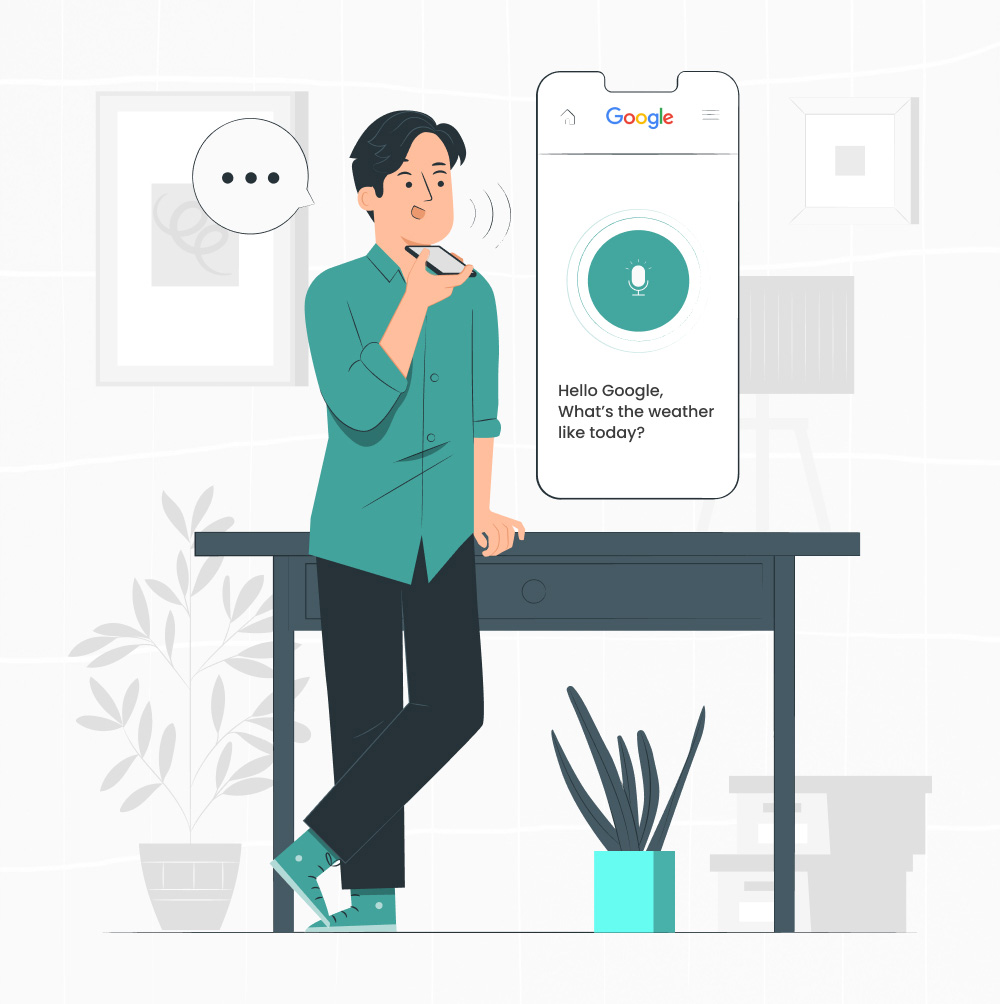
Did you know? 24% of U.S. citizens have voice-search-enabled TV remotes.
Amazon Alexa and Google Assistant are some of the common voice assistants that have made consumer interactions with ecommerce platforms easier and more convenient. Consequently, this growing demand has influenced businesses to optimize their sites for voice search. Not only that, but its integration also demands accurate responses to voice queries.
Ways in which Voice Assistants are used in ecommerce:
- Order tracking – “Alexa, Where is my Amazon order?”
- Searching products – “Hello Google, Find me the best wireless earbuds under $100”
- Adding items to cart – “Hey Siri, Add a pack of Nespresso pods to my cart from Apple Pay”
- Personalized recommendations – “Alexa, What should I buy for Father’s Day?”
7. Omnichannel Strategy: Seamless Experiences Across Channels
Omnichannel strategy, also known as hybrid ecommerce is a sustainable ecommerce trend that combines online and offline shopping, creating a seamless shopping experience for consumers.
With the help of this technology, consumers can browse products online, select which products to choose from, and make a purchase from the comfort of their homes. Along with that, they have the option to pick up their order at a physical store. This feature is truly revolutionizing the ecommerce market.
Benefits of Omnichannel Strategy:
1. Convenience for Consumers
Technology has revolutionized the shopping experience by making it more convenient than ever. Features like mobile apps, AI-powered recommendations, and virtual try-ons help customers make informed decisions quickly. Services such as same-day delivery, curbside pickup, and subscription-based purchases ensure that shopping fits seamlessly into their busy lives.
2. Retailers Use Technology to Understand Customer Behavior
Retailers use various technologies to analyze customer behavior and improve their marketing strategies.
- AI & Machine Learning: Algorithms analyze customer preferences and suggest products based on past purchases and browsing history.
- Heat Mapping & In-Store Analytics: Sensors and cameras track customer movement in physical stores to determine popular products and optimize store layouts.
Example: Amazon utilizes AI-driven recommendations and analyzes past purchases and browsing behavior to offer personalized product suggestions.
3. Reaching New Audiences Online and Offline
Technology enables retailers to expand their reach beyond their traditional customer base. Platforms like Instagram, TikTok, and Facebook allow brands to sell directly to customers via social media.
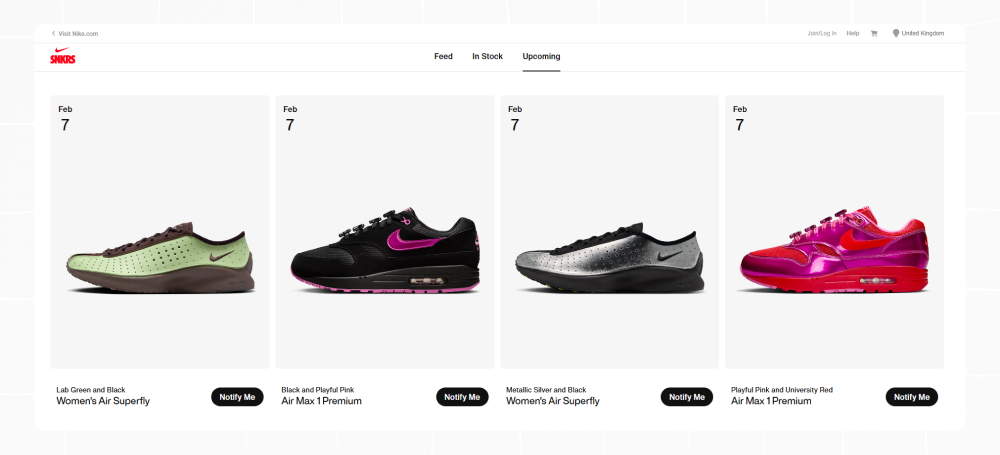
Example: Nike’s SNKRS app provides exclusive access to sneaker drops through a newsletter, blending online and in-store experiences to engage a wider audience.
4. Fast Checkout Process for Consumers
Innovative checkout solutions have eliminated the long wait times associated with traditional shopping, making a place in the latest ecommerce trends:
- Contactless Payments: NFC technology enables customers to pay with a tap of their phone or card.
- Mobile Checkout & Scan-and-Go: Customers scan items using their phones, pay through an app, and leave without waiting in line.
- AI-Powered Stores: Cashier-less stores use AI and cameras to track purchases, automatically charging customers as they exit.
Example: With this in mind, Amazon Go stores use “Just Walk Out” technology that allows shoppers to pick up items and leave without standing in line. The system automatically detects purchases and charges them via the Amazon app.
8. Social Shopping: Turning Social Media Posts into Sales
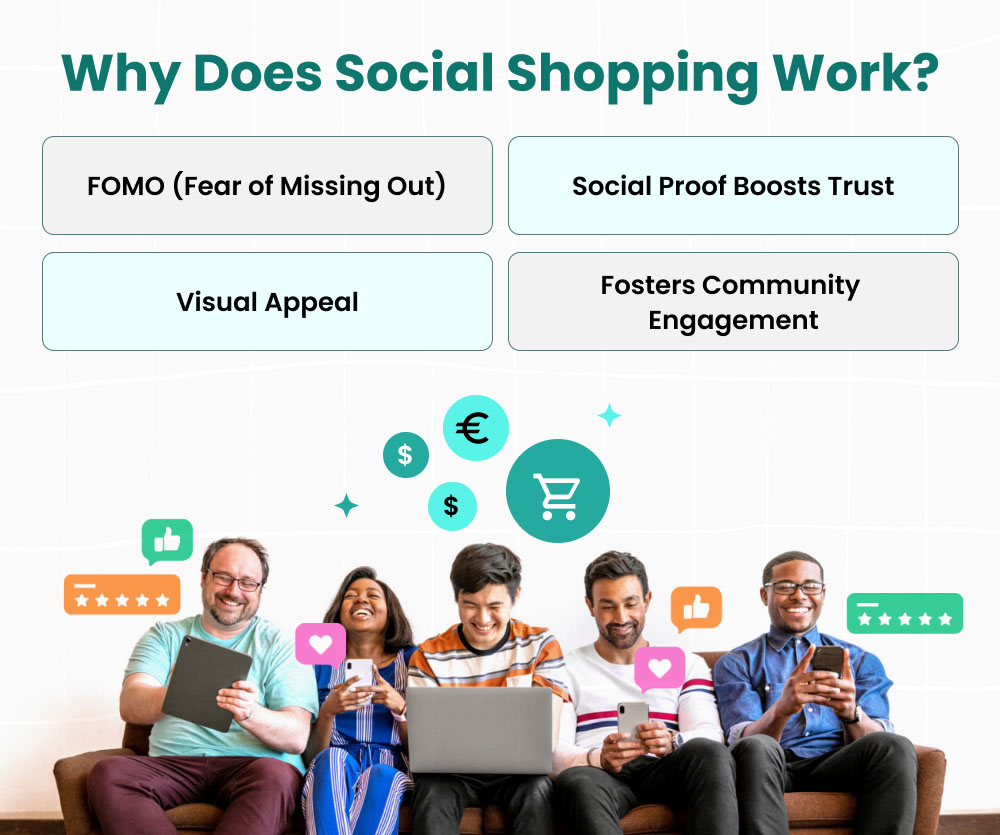
The power of social media is not unknown. It is a common tendency for consumers to search for a product on social media platforms like Instagram, Facebook, or TikTok. The user-generated content in these forums helps them make a better decision.
These platforms offer customer-friendly features like one-click checkout and live shopping, making the buying experience seamless. At the same time, they provide businesses with opportunities to enhance brand awareness and expand their audience. Moreover, selling through social media is a cost-effective strategy, allowing brands to reach potential customers without significant upfront investment.
Also Read: Upgrade Your Social Media Game with These 7 On-Trend Marketing Tactics
9. Subscription Model: Path to Steady Growth
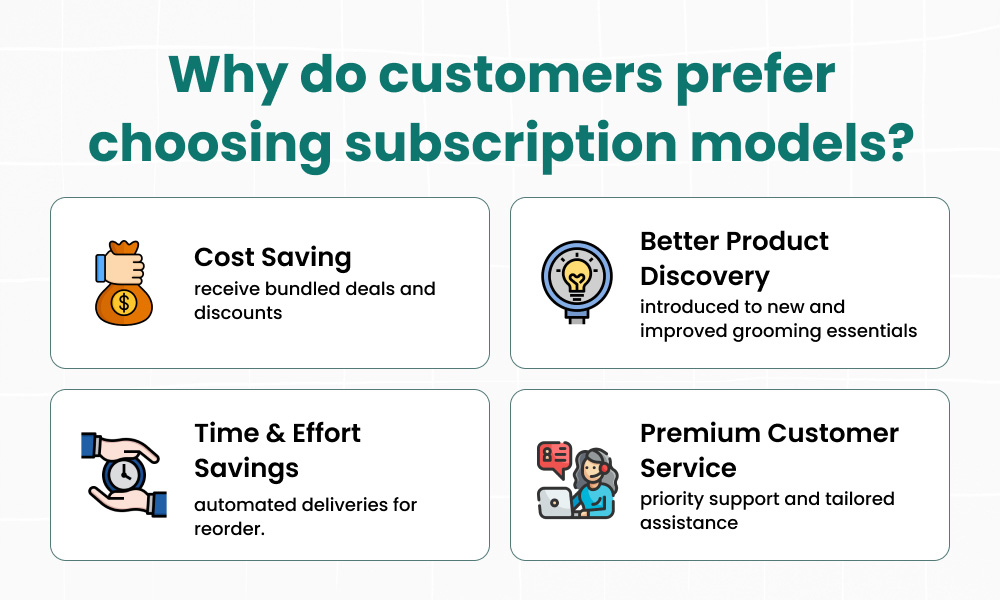
According to research, 24% of consumers have retail subscriptions, with an average of 2.9 subscriptions per person. Ecommerce trends thrive on ease of use and the emotional connection brands build through loyalty programs, exclusivity, and personalization.
As a result, incorporating a subscription model into your business strategy in 2025 can be a game-changer. Take Dollar Shave Club, for example—this brand has built a thriving business by offering razors and grooming products through a subscription service.
How does Dollar Shave Club keep customers coming back?
- Convenience & Automation
Subscribers never have to worry about running out of razors. Dollar Shave Club delivers fresh blades and grooming essentials directly to their door, eliminating the need for last-minute store runs or repeated purchasing decisions.
- Personalized Experiences
By understanding members’ preferences and usage habits, Dollar Shave Club tailors recommendations and deliveries to ensure each customer gets exactly what they need. This level of customization enhances satisfaction and reduces cancellations.
- Exclusive Perks & Loyalty Rewards
Subscribers receive special benefits such as discounted pricing, early access to new products, and priority customer support—all designed to add value and strengthen brand loyalty.
- Predictable, Hassle-Free Billing
With a consistent billing schedule, members can budget easily while enjoying uninterrupted service. This model also ensures a steady and reliable revenue stream for the business.
10. Future of Delivery: Fast and Flexible
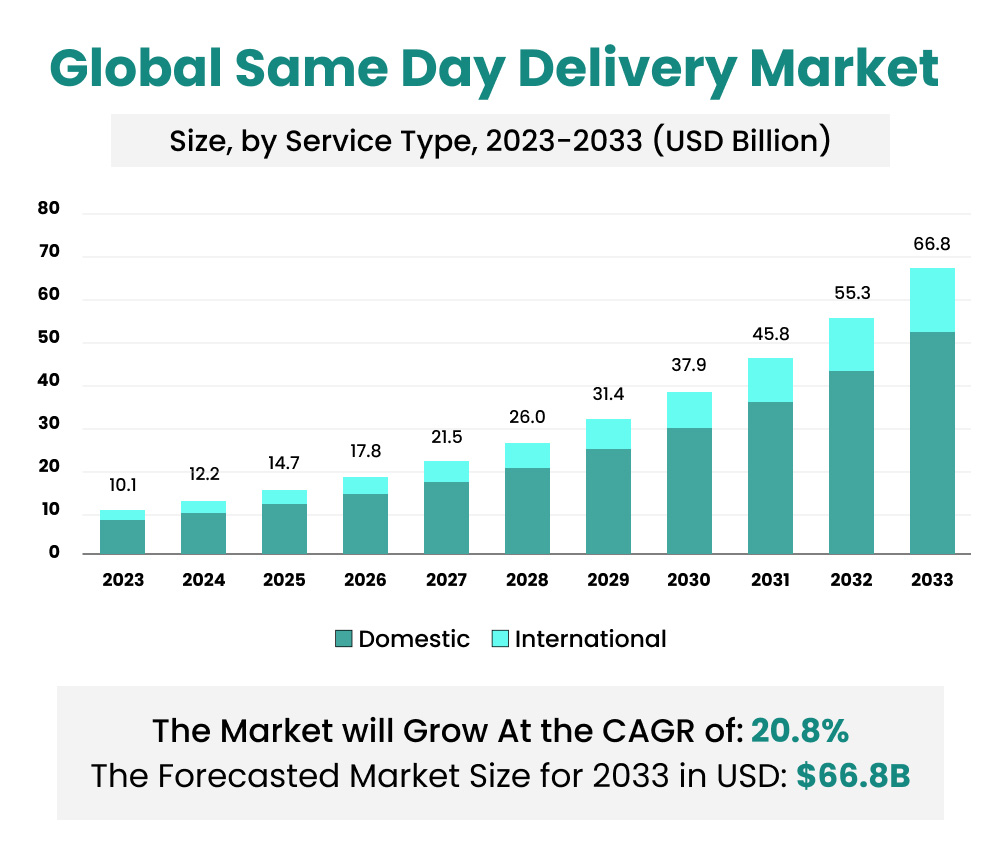
Source: Market.us (LinkedIn)
Fast and flexible delivery has become a game-changer for online shoppers, with 95% of consumers now expecting their orders to arrive quickly, according to Meteor Space’s data. In today’s competitive market, brands that offer same-day or next-day delivery stand out, building customer satisfaction and fostering loyalty with very quick delivery.
But speed isn’t the only factor driving customer expectations—flexibility is just as crucial. Shoppers want to choose when and how they receive their orders. By offering options like evening or weekend deliveries, click-and-collect, or same-day shipping, brands can cater to the diverse needs and busy schedules of their customers.
To make all this possible, businesses rely on cutting-edge logistics systems, efficient warehousing, and strong partnerships with reliable delivery services. By optimizing operations and fine-tuning delivery routes, brands can ensure not only speed but also reliability—enhancing the entire customer experience and setting themselves apart in the eyes of shoppers who value convenience and timely service.
The key elements included in this ecommerce trend:
- Micro-Fulfillment Centers (MFCs) – Small and strategically located warehouses near urban areas that store high-demand products.
- Crowdsourced & Local Delivery Services – Companies partner with services like Uber Eats, DoorDash, and Instacart for last-mile delivery.
- Optimized Route Planning – AI and GPS tracking help delivery personnel choose the fastest routes.
List of ecommerce brands that help other businesses with fast delivery
- Groceries & Food Delivery – Amazon Fresh, Instacart, Walmart+
- Pharmaceuticals & Health Products – CVS, Walgreens, Capsule
- Fashion & Apparel – ASOS, Zara, SHEIN (in select locations)
- Electronics & Tech – Best Buy, Apple (via local courier)
- Home Essentials & Retail – Target, Home Depot, Costco
Conclusion: Your Guide for E-commerce Growth in 2025
The ecommerce space is evolving rapidly, driven by technological advancements and shifting consumer expectations. In 2025, AI-powered personalization, voice commerce, and AR/VR shopping experiences will redefine how customers interact with brands.
Sustainability and ethical shopping continue to shape purchasing decisions, while social commerce and live shopping bring a new level of engagement. Subscription models and direct-to-consumer strategies will enhance customer loyalty, and omnichannel experience ensures seamless shopping experiences across platforms.
If businesses want to thrive in this dynamic market, they must stay agile, leverage cutting-edge technologies, and prioritize customer-centric strategies. By staying ahead of these ecommerce trends, brands can create exceptional shopping experiences and maintain a competitive edge in the digital marketplace.
Want to upgrade your business’ ecommerce marketing strategies? Claim your free consultation with our marketing experts today!
Frequently Asked Questions
1. What is the future of eCommerce marketing in 2025?
The future of eCommerce marketing in 2025 is all about personalization. In fact, AI-driven experiences will play a key role in the ecommerce market to attract potential consumers. People are craving authentic connections with brands, and technology is making it easier to deliver those experiences at scale.
2. What is zero-click marketing?
Zero-click marketing is about giving people the information they need without requiring a click. It delivers answers directly on search results, social media feeds, or other platforms, so users get value instantly.
3. What e-commerce products will be trending in 2025?
In 2025, the e-commerce space is likely to see several ecommerce trends driven by technology, sustainability, and consumer behavior.
- Sustainable and Eco-Friendly Products
- Health and Wellness Products
- Smart Home Devices
- Personalized and Customizable Items
- Pet Products

You did a fantastic job simplifying a complex subject. The content was engaging and educational, and I feel like I learned a lot from reading this.
Your writing has a way of making complex topics seem approachable. Thank you for demystifying this subject for me.
I found this article extremely informative. The way you’ve explained things step by step makes it so much easier for someone new to the topic to follow along.